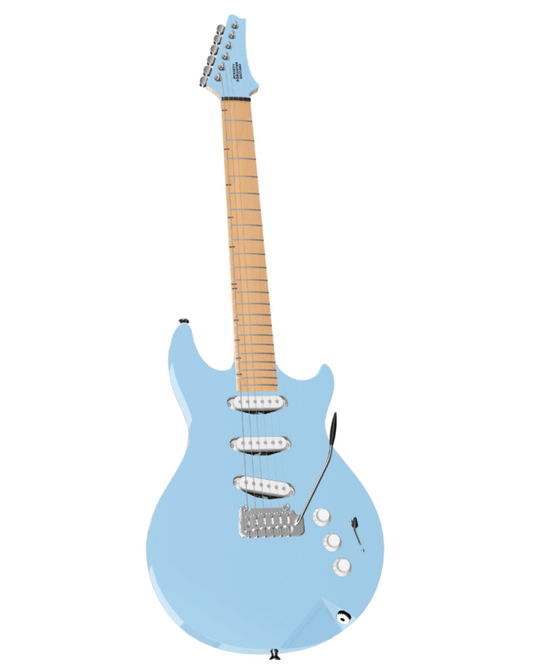Easy mods that you can do yourself to unlock new tonal possibilities from your guitar.
Today we are going to look at a tone cap value switcher.
Tone controls in guitars use capacitors and the amount that you turn the tone knob changes how much of the signal goes to the capacitor, which is then bleeding off to ground. The higher the capacitance of the capacitor, the darker it will make the tone control sound.

So typically with brighter pickups, people will use higher value capacitors. So for single coils, a lot of people use 0.047uF capacitors. And for humbuckers, which are naturally a little bit darker, you don't want that tone capacitor to be as heavy handed. So you use a 0.022uF capacitor.
But you might find yourself in a situation where you have, say, a 0.022uF capacitor, but for some songs or some styles of music that you play, you actually want the roll off of that tone control to be a little bit different.
So what this model lets you do is have two different values of capacitor and use the push pull to decide which one is going to be engaged by that tone control.

Let's talk through this one. So this one's pretty straightforward.
The hot from the pickup: now this, if you're using say a volume in combination with a tome, and the signal usually goes into lug 1 of the volume control and then out from lug 1 of that volume control into lug two of your tone pot. So that hot is basically the output from the pickup, or if you're using this on a master tone circuit, it'll be the output from the switch. So you use the switch to select between the pickups and the output goes into this lug.
Terminal C1 on the switch part of the push pull we are going to send to ground, and we're going to add a jumper between lug 3 of the pot and terminal C2 of the switch part.
And then we need to add our two capacitors of choice. These two capacitors can be any value you like, but typically in guitars you see as low as 0.015uF and as high as 0.047uF. You can go outside those, but your results may vary.
So we're going to add one capacitor and one leg of that is going to go to terminal 1, and the other leg is going to go to terminal 3, and the other one is going to go on the bottom of the switch part and it's going to go between terminals 2 and 4.
So let's talk about what's happening here.
So the signal is coming into lug 2 of the pot, and the amount that you turn the knob is going to determine how much of that signal then comes out of lug 3 and into terminal C2 of the switch.
Now when the switch in the down position, it's going to engage the bottom capacitor. So signal from C2 connects to terminal 4 through the capacitor to terminal 2. Terminal 2 connects to C1, and then that goes out to ground.
With just a regular tone control, you'd have the capacitor between that lug 3 of the pot and the casing of the pot, which is then connected to ground. So this is doing exactly the same thing. It's just taking a slightly more complicated route to get to ground.
And when you pull up on the push pull, instead of terminals 2 and 4 being connected to C2 and C2, now C1 connects to 1 and C2 connects to 3.
So you can see again that signal from lug 3 of the pot is going into terminal C2, which is connected to 3, going to go through the upper capacitor to terminal 1. Terminal 1 connects to C1, and then that goes to ground.
So this is a really, really easy way to even just to test different capacity values, leave two different capacitors in there, play your guitar for a week or two and just play around with which one you think sounds better.
And it's really about finding the capacitor that matches best to how your pickups sound and gives you the most usable range of tone control.
Sometimes you might want a really sharp drop off in tone because you want to be able to get into that kind of darker muddier tone a little bit quicker on that tone control. So it's all really a matter of preference. And what this lets you do is have a couple of different options there in your guitar at the same time, so you can easily play with both. That's it. Grab your soldering iron and happy modding.




























